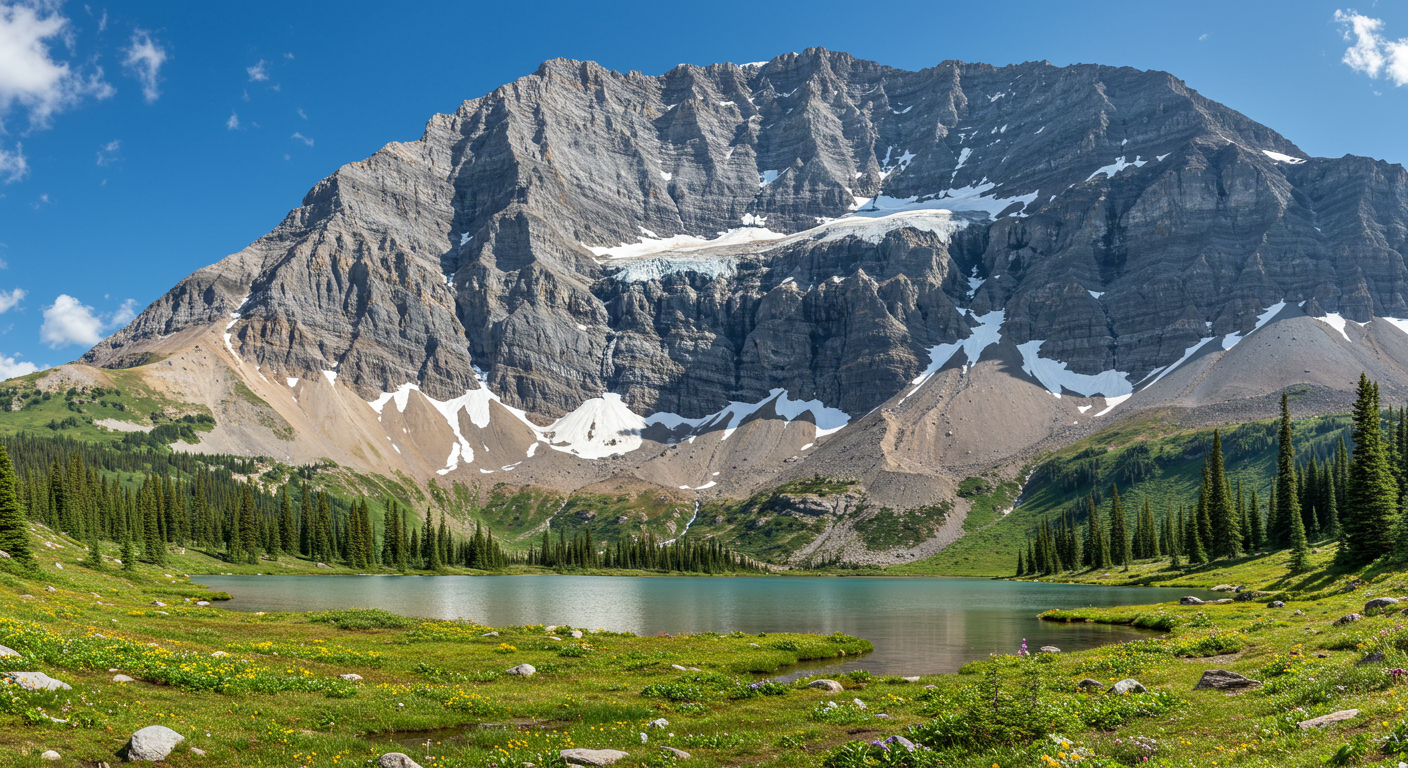Nestled in the dramatic Opal Range of Alberta’s Kananaskis Country, Mount Blane is one of the region’s most awe-inspiring yet lesser-known mountain destinations. With its razor-sharp ridgelines, raw limestone cliffs, and sweeping views, Mount Blane is a challenging but rewarding climb for adventurers who seek nature in its purest form.
Unlike popular peaks that attract heavy tourist traffic, Mount Blane offers a deeper wilderness experience, demanding both physical endurance and mountain know-how. For those willing to rise to the challenge, this mountain unveils a remarkable alpine world filled with solitude, beauty, and elevation.
Where is Mount Blane Located?
Mount Blane is situated in the southern part of Alberta, within the boundaries of Peter Lougheed Provincial Park. It belongs to the Opal Range, a striking chain of peaks known for their knife-like formations and steep, rugged faces. Rising to nearly 3,000 meters (2,993 m / 9,819 feet), Mount Blane is visible from several points in the Kananaskis Valley but remains relatively untouched due to its difficulty and remoteness.
Access to the base of the mountain typically begins from the Opal Creek trailhead, a rough route leading to the southern side of the peak. It’s a remote location, requiring preparation, route-finding skills, and experience in alpine environments.
The History and Naming of Mount Blane
The mountain was named in honor of Lieutenant Richard Blane, a British officer who contributed to early Canadian cartography. The name was given by the Interprovincial Boundary Survey in the early 20th century. While not among the oldest named mountains in the Rockies, Mount Blane holds a place in the heritage of Canadian exploration.
Though not widely documented in historical climbing logs, the mountain has steadily gained a quiet reputation among experienced hikers and climbers who value off-the-grid exploration.
Climbing Mount Blane: A Real Alpine Test
🧗 Mount Blane Climbing Routes
The South Ridge of Mount Blane is the most commonly attempted ascent. Rated as a scramble to low-grade alpine climb, the route includes loose rock, narrow ledges, steep pitches, and significant exposure. Most climbers tackle the route without ropes, though safety gear is strongly advised.
Other routes, such as the East Face or North Ridge, are rarely attempted and significantly more technical. These alternatives involve complex navigation and are only suitable for experienced climbers familiar with Canadian alpine conditions.
🥾 Approach and Trailhead Information
The trail begins at Opal Creek, with hikers traversing unmaintained paths, talus slopes, and scree-covered terrain. There is no formal signage, so reliable topographic maps, GPS, and backcountry navigation skills are essential. The approach itself takes several hours and includes elevation gain well before the actual climbing begins.
Weather plays a critical role. Afternoon storms are common, and the ridge offers little protection. Early morning starts are strongly recommended to avoid electrical activity and sudden changes in visibility.
Mount Blane’s Breathtaking Summit Views
Climbers who reach the summit of Mount Blane are greeted with a panoramic view of the Kananaskis Valley, the surrounding peaks of the Opal Range, and far-stretching alpine lakes shimmering in the distance. The mountaintop is narrow and sharp, offering a dramatic perspective of the surrounding wilderness.
On a clear day, nearby mountains like Mount Evan-Thomas, Mount Lawson, and Mount Wintour are visible in all directions. The sensation of standing atop Mount Blane—far from crowds, roads, and noise—is both exhilarating and deeply peaceful.
Wildlife and Landscape Around Mount Blane
Though rugged and remote, the ecosystem around Mount Blane is teeming with alpine flora and wildlife. In summer, wildflowers bloom across the lower slopes, while lichen and moss cover the rockier elevations.
Sightings of mountain goats, bighorn sheep, and even black bears are possible in the area. Golden eagles and peregrine falcons are often spotted gliding above the cliffs, using the wind currents to patrol their territory.
Hikers are urged to carry bear spray and make noise during their approach, as the region is an active wildlife corridor.
Best Time of Year to Explore Mount Blane
The most suitable months to attempt Mount Blane are from late June to early September, when snow has receded, and the trail conditions are manageable. Even during this window, weather in the Canadian Rockies can be unpredictable, and temperatures may vary dramatically between base and summit.
Winter attempts are extremely dangerous due to avalanche risk, ice buildup, and severe wind exposure. Mount Blane is best left for summer adventurers with alpine experience.
Preparation and Safety Tips for Mount Blane
Given its remote setting and technical challenges, preparing properly is crucial before heading toward Mount Blane:
-
Physical Conditioning: This is a strenuous climb, suitable only for individuals in strong physical condition.
-
Gear Essentials: Helmet, gloves, crampons (if early season), GPS, and layers of clothing are essential.
-
Start Early: Weather changes fast. Begin before sunrise to ensure enough time for ascent and descent.
-
Inform Someone: Always tell someone your planned route and expected return time.
-
Navigation Tools: Since trails are unmarked, bring a topographic map, compass, and digital GPS.
Why Mount Blane Stands Out from Other Peaks
Unlike over-visited summits like Ha Ling Peak or Sulphur Mountain, Mount Blane remains wild, raw, and relatively untraveled. The mountain doesn’t have groomed trails or summit markers. It demands effort but gives back in solitude and serenity.
For those looking to truly disconnect from the buzz of civilization and immerse themselves in Canada’s alpine splendor, Mount Blane delivers an unmatched experience.
Conclusion: Mount Blane’s Quiet Grandeur
Mount Blane is not for the faint-hearted—but for the bold and the prepared, it offers a mountain adventure like no other. Its remote location, stunning views, and serious terrain make it a hidden treasure in Alberta’s Kananaskis region.
Whether you’re drawn to its challenging ridgelines, the untouched beauty of its valleys, or the rare chance to climb in peace, Mount Blane will leave a lasting impression. In an age of crowded trails and social media summits, this peak remains one of the last true wilderness climbs in the Canadian Rockies.

